EFI-Project MoJo 3D
Das Thema des Monats
Seit Januar 2018 präsentieren wir an dieser Stelle monatlich ein spannendes Thema aus dem Bereich der Werkstoffwissenschaften.
Das “Thema das Monats” ist einfach und verständlich erklärt und gibt aufschlussreiche Einblicke in die Forschungsaktivitäten unseres Departments.
Das Thema des Monats April kommt aus dem Lehrstuhl für Glas und Keramik (WW3) und hat den Titel:
Modular Composite Joint 3D (MoJo 3D)
von Dr. Tobias Fey und Jonas Biggemann
Worum geht es bei dem Thema?
The EFI project focuses on the development of an innovative therapeutic strategy for the biological resurfacing and functional restoration of extensive articular cartilage defects or degenerated joint structures. So far current biological cartilage repair strategies consider the total joint replacement as a gold standard for large cartilage defects, which is inevitable connected with a significant removal of healthy tissue. Other strategies like autologous chondrocyte implantation are only suitable for small circumscribed lesions with intact adjacent cartilage. In contrast to the state of the art this novel concept addresses the restoration of the entire joint surface preserving the biomechanically important subchondral bone plate.
Novel bioactive ceramic-polymer composite systems based on modular unit structures called “building-blocks” with 200-4000 µm in size will be arranged in a three-dimensional lattice structure (Fig. 1) to perfectly fit the individual joint geometry of each patient (Fig. 2).
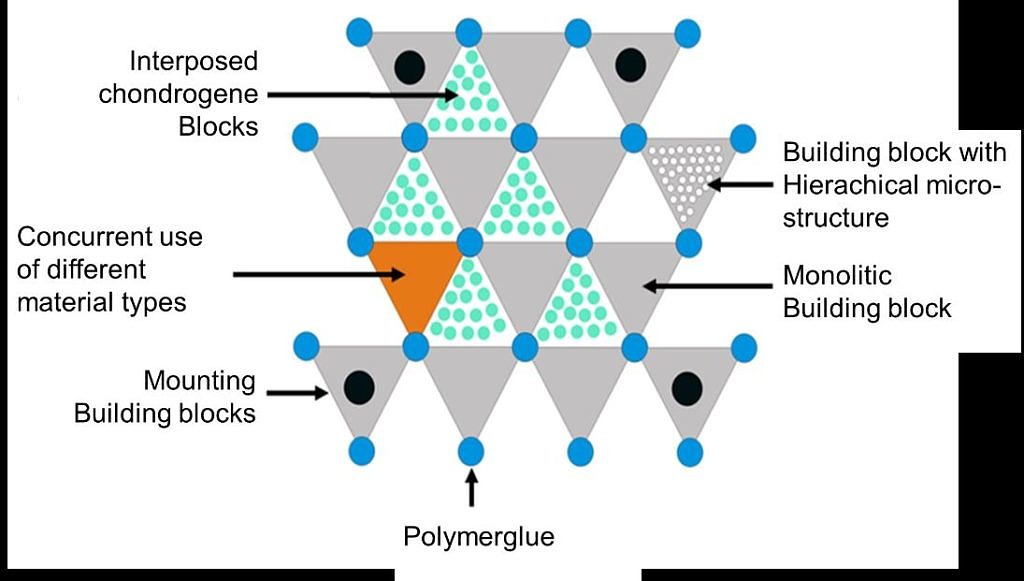
Fig. 1: Schematic drawing of the 3D-lattice structure with different building blocks.
Wo findet es Anwendung?
The modular 3D-lattice structure in Fig. 1 shows the potential of combining various block types with different material properties and microstructures. The blocks can be made of inert, bioactive and organic materials with simple (e.g. triangle, discoid) or complex (e.g. bone morphology) geometries and monolithic or hierarchical (porous) microstructures. Thus these lattice composites can range over from a full bioactive system to a non-bioactive system. Bioactive ceramics like calcium phosphates form strong bonds between the implant and bone interface providing a permanent adherent implant. The modularity enables the use of high strength alumina at high friction locations to ensure the mechanical stability of the implant. The individual building blocks are bonded with flexible polymer-glue dots to a resilient network, which can be individualized to fit any patient defect size and joint geometry (Fig. 3). The porous lattice structure may serve as a protective cage for chondrocytes to introduce a functional cartilage restoration.
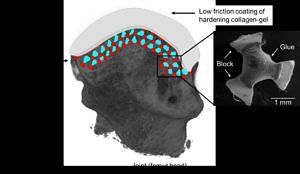
Fig. 2: Partial joint replacement by a 3D lattice composite structure with additional low friction coating and SEM images of ceramic block and polymer glue composite.
The SEM image shows a unit cell of the composite structure consisting of ceramic building blocks in triangular shape (side length 1.2 mm) and polymer glue retaining the blocks. To prevent abrasion, a low friction coating of a hardening collagen-gel is mandatory if mono layer building blocks (monolithic, hierarchical microstructure) are used. Bi- and multilayer building blocks with additional surface layers, either a gradient or non-gradient setup, can fit additional request for low friction with simultaneous high mechanical strength and fixation in the subchondral bone. The small dimensions of the single elements allow a low-profile construct with superior biomechanical properties.
Was ist weiter geplant?
The first prototypes for cell testing and demonstrators as shown in fig. 3 are already manufactured and send to cell tests to investigate the biological response. Simultaneously the mechanical properties will be tested in wear experiments to design a low-friction optimized modular scaffold.
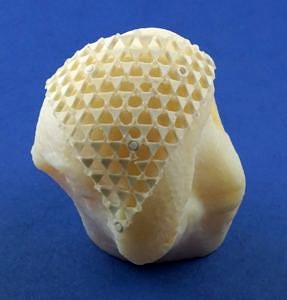
Fig. 3: 3D-Lattice structure placed on a 3D printed polymer joint model.
Zur Person:
Name: Dr. Tobias Fey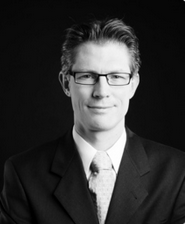
Studium: 2001 Werkstoffwissenschaften Dipl.-Ing.
Promotion: 2008 Werkstoffwissenschaften zum Dr.-Ing.
Forschungsschwerpunkte: Keramische zellulare Werkstoffe und Komposite Werkstoffe, Mikrostrukturcharakterisierung und Simulation
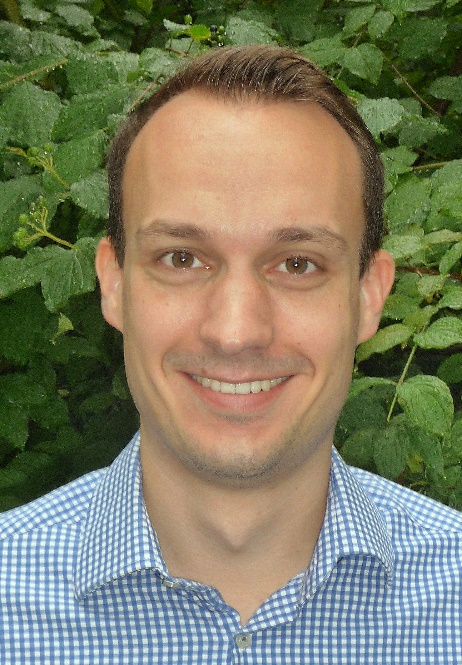
Name: Jonas Biggemann
Studium: M.Sc. Materialwissenschaften und Werkstofftechnik (FAU)
Position: Wissenschaftlicher Mitarbeiter (Doktorand) am Lehrstuhl für Glas und Keramik
Hobbys: Jung-DGM Erlangen-Nürnberg, Reisen, Fußball, Klavier
